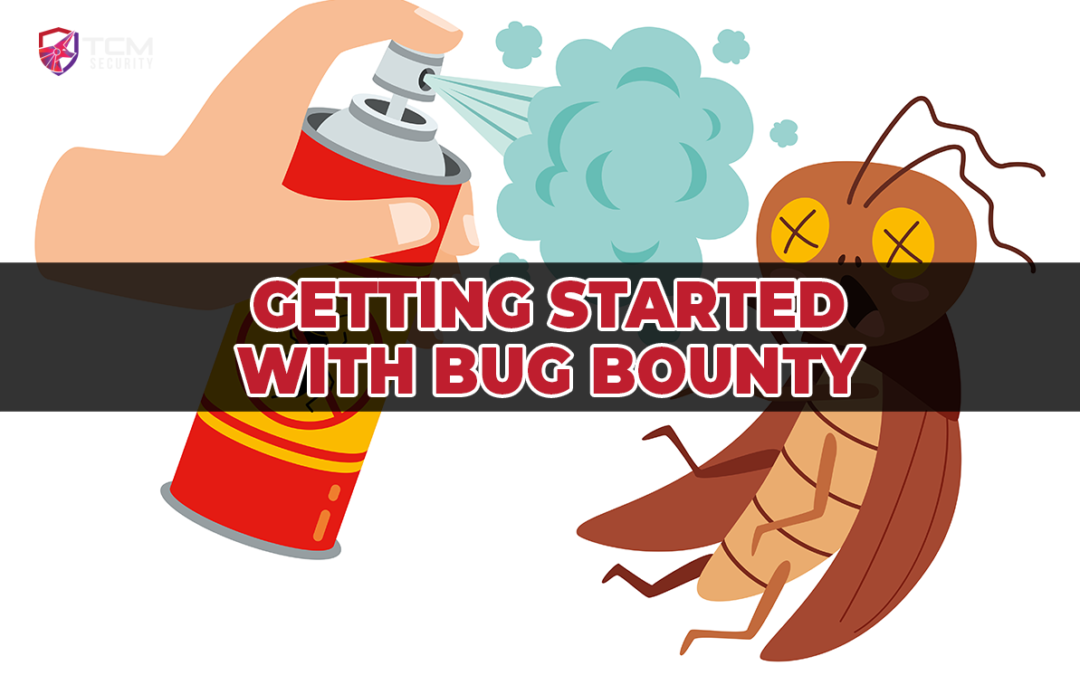Bug bounty programs have been a popular phenomenon in the tech industry for the last decade or so. They’re an opportunity for anyone to identify vulnerabilities in a company’s software or infrastructure and get rewarded for their discoveries.
But, how do you get started? Today, we’ll introduce you to the world of bug bounty hunting, the key tools you need, and tips on balancing studying with active bug hunting.
Understanding Bug Bounty
Before we delve into the hows, let’s understand what a bug bounty program is. Organizations create bug bounty programs to incentivize security researchers, pentesters, and security enthusiasts to uncover and report vulnerabilities in their systems. The rewards can range from recognition, to monetary payouts based on the severity and potential impact of the identified bug.
Unlike penetration testing, bug bounty hunting is less structured. Penetration testing often involves a predefined scope and a contractual agreement. Bug bounty hunting, on the other hand, typically occurs on live systems in an open-ended manner, providing an element of unpredictability that requires a broader skill set and adaptability. However, there is always a defined scope, and as a bug bounty hunter, you need to ensure you stay within it.
Key Tools for Bug Bounty Hunting
To get started with bug bounty hunting, you’ll need to familiarize yourself with various tools that will assist you in different areas. Here are some categories of tools you should consider:
- Proxies: Tools like Burp Suite, Caido, and OWASP ZAP are instrumental when testing web applications. They allow you to intercept and modify traffic, and they also come with features that help automate attacks.
- Endpoint, Subdomain, and Content Discovery: Tools such as FFUF, AMASS, and Kiterunner can help you find hidden content and increase your attack surface. They allow for extensive scanning to discover subdomains, directories, and endpoints that other tools may miss.
- Vulnerability Scanners: Scanners can automatically check for known vulnerabilities, making them a valuable part of your arsenal.
- Notekeeping: Keeping track of your findings is vital in bug bounty hunting. Platforms like Joplin, Obsidian, or Notion can help you keep your findings organized. We did a video on rating all of the available note keeping apps which you can find on our YouTube channel https://www.youtube.com/watch?v=KpX7v5Ym3wg
Resources for Bug Bounty Hunting
In addition to tools, there are numerous resources that you should consider utilizing to aid your bug bounty journey. These include:
- PayloadsAllTheThings: A comprehensive list of payloads and bypasses for all kinds of vulnerabilities. This repository is a gold mine for any aspiring bug bounty hunter.
- HackTricks: This is a collection of tricks, techniques, and resources compiled from various places. It can provide insights into various attacks and vulnerabilities.
- AppSecExplained: This platform provides checklists and explanations of various security topics. The content here is useful for both beginners and experienced bug bounty hunters.
- Portswigger’s Web Security Academy & PentesterLab: These platforms offer exercises to practice your skills and learn new ones. Many exercises are free, but there’s also a paid subscription that provides access to more advanced content.
- Bug Bounty Platforms: Platforms like Intigriti, HackerOne, Bugcrowd, and Open Bug Bounty host numerous bug bounty programs. They also offer educational resources and community forums where you can learn from other hunters.
Approaching Bug Bounty Hunting
Starting in the bug bounty world can seem daunting, but with a structured approach, you can navigate it effectively. Here’s a suggested approach:
- Knowledge Gathering: Learn about web technologies, common vulnerabilities like XSS, SQL Injection, CSRF, SSRF, etc., and understand how these attacks work.
- Choosing the Right Program: As a beginner, start with programs that are more forgiving towards mistakes and have a broader scope.
- Reconnaissance: Spend a significant amount of time understanding the system you are testing. Map out all the domains, subdomains, APIs, and third-party integrations. Tools like FFUF and Burp Suite can come in handy here.
- Looking for Vulnerabilities: Once you’ve done your reconnaissance, you can start hunting for vulnerabilities. Always follow the rules set by the bug bounty program, and only test within the defined scope.
- Reporting: After finding a bug, you need to report it effectively. Include a detailed explanation, reproduction steps, potential impact, and ideally a suggestion for fixing the issue. Clear communication is as critical as finding the bug itself.
Balancing Study and Active Bug Hunting
Bug bounty hunting requires a continuous learning mindset. But, how do you balance the theoretical learning with practical hunting? Here are some tips:
- Divide Your Time: Allocate a specific amount of time each day for studying and hunting. It can be 60:40, 70:30, or whatever works best for you. Remember, both are equally important.
- Set Realistic Goals: You can’t learn everything at once, so it’s better to focus on one topic at a time. Set weekly or monthly learning goals and work towards achieving them.
- Practical Application: Try to apply what you learn immediately into your hunting. It helps in better understanding and retention.
- Community Learning: Join groups of likeminded individuals on social media or on Discord. You can learn from others’ experiences and also share your own.
- Healthy Lifestyle: It’s easy to lose track of time when hunting for bugs, but remember, a healthy body fosters a healthy mind. Make sure you get enough sleep!
Embarking on a bug bounty journey is exciting and offers numerous opportunities to learn and grow. It may seem intimidating at first, but with dedication, persistence, and a structured approach, you can carve a successful path in this domain. Happy Hunting!
Want to learn more about bug bounty? Check out the Practical Bug Bounty course on TCM Security Academy to get started with methodology.

About the Author: Alex Olsen
Alex is a Web Application Security specialist with experience working across multiple sectors, from single-developer applications all the way up to enterprise web apps with tens of millions of users. He enjoys building applications almost as much as breaking them and has spent many years supporting the shift-left movement by teaching developers, infrastructure engineers, architects, and anyone who would listen about cybersecurity. He created many of the web hacking courses in TCM Security Academy, as well as the PJWT and PWPT certifications.
Alex holds a Master’s Degree in Computing, as well as the PNPT, CEH, and OSCP certifications.
About TCM Security
TCM Security is a veteran-owned, cybersecurity services and education company founded in Charlotte, NC. Our services division has the mission of protecting people, sensitive data, and systems. With decades of combined experience, thousands of hours of practice, and core values from our time in service, we use our skill set to secure your environment. The TCM Security Academy is an educational platform dedicated to providing affordable, top-notch cybersecurity training to our individual students and corporate clients including both self-paced and instructor-led online courses as well as custom training solutions. We also provide several vendor-agnostic, practical hands-on certification exams to ensure proven job-ready skills to prospective employers.
Pentest Services: https://tcmdev.tcmsecurity.com/our-services/
Follow Us: Blog | LinkedIn | YouTube | Twitter | Facebook | Instagram
Contact Us: sales@tcm-sec.com
See How We Can Secure Your Assets
Let’s talk about how TCM Security can solve your cybersecurity needs. Give us a call, send us an e-mail, or fill out the contact form below to get started.


